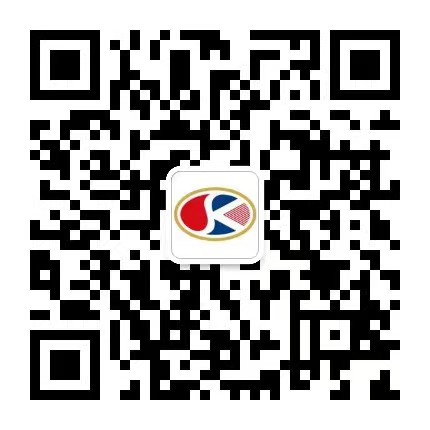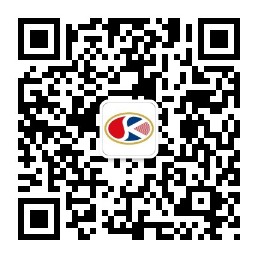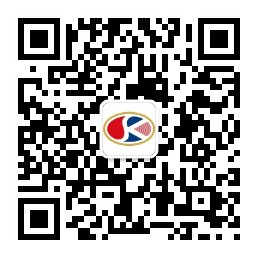News Updates
NEWS CENTER
Related News
There is currently no data available
What is in the technical disclosure book?
Release Time:
2022-08-29
According to the provisions of the Patent Law and the implementing rules, the technical solution required to obtain patent protection is embodied by including some necessary technical elements. In order to fully understand these technical elements and write the application document that will obtain the best scope of protection for patent protection, please complete the relevant items in the following form in as much detail as possible.
At present, most patent agencies have their own technical disclosure template, which basically includes the name of the invention, technical field, background technology, technical scheme, beneficial effects and drawings, and the content of these six parts have more detailed requirements, and some requirements are even consistent with the requirements of the patent application document in the Patent Examination Guide. However, for patent applications, it has gradually spread to the public, and more applicants are small and medium-sized enterprises or even individuals, and most inventors have never been in contact with patent applications or have only been in contact with a few times, and they know little about the writing of technical disclosure documents, so the high-demand technical disclosure templates are generally applicable. To this end, the following content further clarifies the extent to which these six parts of the technical disclosure book should be written at different levels.
The technical scheme mainly includes two categories, one is structure (visible and touching), the other is method (invisible and touching); Therefore, for the name of the invention, it should first be clear which category the technical scheme belongs to, that is, the name of the invention should first clearly indicate whether the technical scheme is a structure or a method, because the patent agency can know from the name of the invention which category the technical scheme in the technical disclosure book belongs to the first time, so as to allocate suitable patent agents for processing. Further speed up internal processes and shorten the time of the patent application phase; Secondly, the content of the technical program should be clearly defined, that is, a brief summary of the technical program in one sentence, because at present, the vast majority of patent agents in China are mainly divided into three categories: mechanical, electrical and chemical; Therefore, the invention name that defines the content of the technical proposal allows the patent agency to quickly assign a patent agent in the corresponding field for processing, and can also speed up the internal process and shorten the time of the patent application stage.
No matter what kind of format is used, as long as it can clearly express the type and content of the technical scheme, it does not need to fully meet the requirements for the name of the invention in the Patent Examination Guide; For example, the following formats can be used: "a short summary of the technical solution in one sentence" (structure), "a short summary of the technical solution in one sentence" (method), "a short summary of the technical solution in one sentence" (structure and method).
There are higher requirements for the invention name written by the inventor who is experienced in patent application, because compared with the patent agent, the inventor has a deeper understanding of the technical scheme, and the corresponding invention name is more accurate. The invention name in the technical disclosure can be directly used as the invention name in the patent application document. Therefore, the requirements for the name of the invention in the technical disclosure should be consistent with the requirements for the name of the invention in the Patent Examination Guide.
First of all, with respect to the word count, the word count of the invention name is generally not more than 25 words, a maximum of 40 words (such as in the field of chemistry).
Secondly, with respect to language, the name of the invention shall adopt the technical terms commonly used in the technical field to which the technical scheme belongs; On the other hand, do not use the inventor's own thought of the term in the name of the invention, because the first thing they think of, whether it is a patent agent or a patent examiner, can not understand the term through any way, which may cause the invention name is not clear.
Finally, the name of the invention shall clearly, briefly and comprehensively reflect the subject and type of protection required, and shall not use personal names, place names, trademarks, models, trade names, commercial propaganda terms, etc.; The subject and type here are essentially the same as the type and content above, but it is important to note that parentheses cannot be used in the name of the invention, that is, a full sentence expressing the subject and type claimed for protection.
For inventors who have never touched a patent application or have only touched a few times, the author does not recommend writing this content, because the requirements in the technical field of the Patent Examination Guide are too professional, and most of the technical fields determined by the inventor do not meet the requirements, so patent agents generally do not directly use it in the process of writing. In order to minimize the time for the inventor to write the technical disclosure, this part of the content can be omitted.
(2) Inventors experienced in patent application
For inventors who are experienced in patent application, the author recommends that this content be written in the technical disclosure; As for the technical proposal itself, the inventor has a better understanding and clearer understanding of the technical field to which the technical proposal belongs than the agent, so the technical field given by the inventor is more accurate and can be directly used in the patent application text. Therefore, the requirements for the technical field in the technical disclosure book should be consistent with the requirements for the technical field in the Patent Examination Guide.
The technical field in the technical disclosure letter shall be the technical field to which the technical scheme for protection belongs, not the technical field above or adjacent to the technical scheme, nor the technical scheme itself; Here the author listed to explain; If the structure of the teacup is improved in the technical solution, then for the technical solution, the upper field is: daily necessities (because the teacup belongs to the category of daily necessities), the adjacent technical field is: teapot (teacup and teapot belong to the two similar fields), the technical solution itself: the improvement point of the teacup structure, the technical field is: teacup; So the right technology field is: teacups.
As for the background technology part, many inventors do not attach importance to it, thinking that as a technical disclosure book, writing the technical plan itself is not enough; Here I want to tell you that the technical part of the background is particularly important, the famous scientist and physicist Albert Einstein once said, "If I were given one hour to save the planet, I would take 59 minutes to define the problem and 1 minute to solve it." In terms of patents, background technology is also a very important part, because whether it is patent agents, patent examiners or anyone who will see this patent in the future, apart from the patent name, the first sight is the background technology, the background technology records the core problem to be solved by the technical solution, when the core problem is understood, You can understand the technical solution itself more quickly, so you should pay attention to the background technical part.
For inventors who have never touched a patent application or have only touched a few times and inventors who are experienced in patent application, the requirements for writing background technology are basically the same, and it should be ensured that the background technology indicates the closest prior art related to the application and the technical shortcomings in the prior art.
Background technology involves two aspects, namely product class and method class. When the background technology is related to existing products, it should be combined with the structure and working principle of existing products to express its problems; When the background technology is related to the existing method, it should be combined with the existing specific method steps to logically explain the existing method problems; In writing the background technology, remember not to use slanderous language, such as: the prior art shows that the designer's ignorance in the design of the tea cup structure, the tea cup design is extremely unreasonable, and the technology is very backward; That is, when writing the background technology, it should explain the existing problems in the existing technology with reasonable evidence.
The technical proposal part is the core content of the technical disclosure book, and the completeness of the technical proposal directly affects the understanding degree of the patent agent for the technical proposal; Therefore, no matter whether it is an inventor who has never touched a patent application or has only touched a few times, or an inventor who has rich experience in patent application, no matter what kind of expression is used, as long as the specific realization process of the invented technical solution can be clearly explained without ambiguity; In short, make sure that the technical solution written can be read and implemented by technical personnel in the field (e.g., colleagues, competitors, etc.).
As the name of the invention says, technical solutions are roughly divided into two categories: structural (visible and touched) and method (invisible and touched).
For the technical scheme of the structure class, it should be combined with the attached drawings to clearly and completely explain the overall structure of the product and the name, location relationship, connection relationship of the components, and explain its working principle, working process and use method, which is very important to combine the attached drawings, because the structure class itself is visible and tangible, and the technical scheme described in thin air is obviously difficult to understand; And it is best to combine the three-dimensional diagram to describe, which can be more convenient for patent agents to understand the scheme, and the understanding of the technical scheme is more accurate;
The technical solution for the method class should clearly and logically explain what to do in the first step, what to do in the second step, what to do in the third step... , and how each step is realized, need to be explained in detail, it is best to be described in detail in combination with the flow chart, the existence of flow chart can not only help inventors clarify the method steps in the technical solution, but also enable patent agents to understand the technical solution faster.
This is the problem in most technical solutions, and it also occurs most frequently. For example, "cloud service platform" ----, "cloud platform", "identification code" ----, "meal code", "identification module" ---- "identification system"; Inconsistent technical terms will lead to a deviation in the understanding of the patent agent's program, and even lead to an incorrect understanding of the program, because for technology, a word or two difference may lead to the deformation of the entire program, and different technical terms correspond to different parts, so when the patent agent meets similar technical terms, either judge by context. Either communicate with the inventor; The reasons for the inconsistent wording mainly include: 1, the front is a complete name, and the back has become an abbreviation; 2, the technical solution is not completed in one day, resulting in different descriptions of the same part at different times; Therefore, for the above reasons, this problem is essentially very easy to solve, requiring inventors to pay more attention in the process of writing technical solutions.
Some inventors like to keep technical secrets, omit abbreviations or even do not describe the key points in the technical scheme. The abbreviation here only provides the idea, but there is no specific implementation process. Here the author does not object to the retention of technical secrets, but the technical content recorded in the technical scheme should be complete and achievable; If the technical solution after retaining the technical secret is not implementable, it is recommended that the inventor no longer retain the technical secret.
Advantageous effect
For inventors who have never touched the patent application or have only touched the patent application a few times, the author suggests to summarize the technical solution and directly describe the beneficial effects. The beneficial effect here is essentially the same as the problem in the background technology. For example, the problem in the background technology is that the manufacturing cost is too high, and the beneficial effect is that the manufacturing cost is reduced.
For inventors who are experienced in patent application, the requirement is higher, suggesting that a technical improvement point describe a beneficial effect, and even write the beneficial effect that is necessarily generated by the technical solution (referring to the technical problems not mentioned in the background technology), that is, write multiple beneficial effects, which is beneficial to the subsequent patent authorization; It is better to compare with the existing technology, and the beneficial effect of the technical scheme can be highlighted more after comparison.
For this part of the diagram, whether the technical solution is a structure class or a method class, it is very important, and it is best to provide editable graphics files (such as CAD files, SolidWorks files, flow charts, etc.) under the premise of providing the diagram.
For the structure class, the attached diagram should first give the name of the attached diagram (that is, what is the diagram, the structure diagram? Top view? Partial diagram?) Secondly, the name of each component should be marked in the diagram; It should be noted that the drawings should be white paper with black lines, without shading or blackening.
For method classes, the main concern is the flow chart, so you need to provide a flow chart of the main steps and indicate what the flow chart is.
For structural classes, in addition to the above requirements, each part name should also be matched with the corresponding drawing mark (1- what is, 2- what is...). And directly replace the part name with the drawing mark in the attached drawing.
For the method class, in addition to the above requirements, the inventor who is experienced in patent application should also provide more flow charts, such as which steps are implemented in each step, and provide as many flow charts as possible to facilitate the patent agent to better understand the scheme.
More intellectual property related issues, welcome your scan code consultation! Have questions must answer yo ~ Deep credible is willing to use professional and focus, to provide you with high-quality and efficient intellectual property agency services!

More information and services
The official subscription number of "Deep Trusted Intellectual Property Rights" on the code

More deeply trusted dynamic news, important data/reports, authorized cases, etc
Code on the concern [deep trusted intellectual property service platform] official service number

相关新闻
Telephone:
Telephone:+86-755-82566227、82566717、13751089600
Head Office:13 / F, Building 14, Longhua Science and Technology Innovation Center (Mission Hills), No. 8 Golf Avenue, Guanlan Street, Longhua District, Shenzhen
Head Office:
13 / F, Building 14, Longhua Science and Technology Innovation Center (Mission Hills), No. 8 Golf Avenue, Guanlan Street, Longhua District, Shenzhen
Subsidiary Company:2808, Block B2, Yuexiu Xinghui Junbo, No.18 Tazihu East Road, Jiangan District, Wuhan City, Hubei Province
Subsidiary Company:
2808, Block B2, Yuexiu Xinghui Junbo, No.18 Tazihu East Road, Jiangan District, Wuhan City, Hubei Province

Service Number

Subscription Number
Copyright ©2016 Shenzhen Shenkexin patent Agency Co., LTD All rights reserved | 粤ICP备2021174526号
Copyright ©2016 深圳市深可信专利代理有限公司 版权所有 | 粤ICP备2021174526号 SEO标签
Copyright ©2016 深圳市深可信专利代理有限公司 版权所有